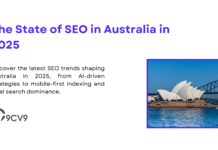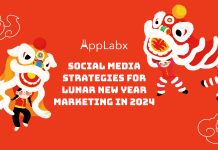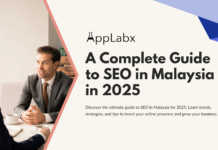Key Takeaways
- Cultural Sensitivity Drives Engagement: Tailor your content to respect Malaysia’s diverse culture, incorporating local traditions and language nuances for a more resonant and engaging social media presence.
- Strategic Paid Advertising Unleashes Potential: Leverage paid features on platforms like Facebook and Instagram, implementing budgeting strategies and dynamic content to amplify your brand’s reach and impact in the competitive Malaysian market.
- Regulatory Compliance is Non-negotiable: Stay compliant with advertising standards, data protection laws, and influencer marketing guidelines to build trust, foster transparency, and ensure sustained success in the evolving landscape of Malaysian social media advertising.
In the ever-evolving landscape of digital marketing, the role of social media advertising has become indispensable, especially for businesses seeking growth and prominence in Malaysia.
As a dynamic and culturally diverse nation, Malaysia offers a unique market that thrives on the interconnectedness fostered by various social media platforms.
In this comprehensive guide, we delve into the intricacies of Malaysia’s social media landscape, unraveling the strategies and nuances that businesses need to grasp to harness the immense potential for business growth.

Why Social Media Advertising Matters in Malaysia
Malaysia’s digital revolution has propelled social media into the forefront of communication, entertainment, and commerce.
With a population that is not only digitally savvy but also socially engaged, businesses can no longer afford to overlook the impact of social media advertising.
From the bustling metropolis of Kuala Lumpur to the serene landscapes of Penang, social media platforms have become virtual marketplaces where brands connect with their audiences, and consumers discover, engage, and make informed decisions.
A Glimpse into Malaysia’s Social Media Tapestry
To embark on a successful social media advertising journey in Malaysia, it’s imperative to first navigate the intricate tapestry of popular platforms shaping the digital landscape.
From the ubiquitous Facebook, where personal connections intertwine with business opportunities, to the visually immersive world of Instagram, and the professional network of LinkedIn – each platform offers a unique avenue for businesses to carve their digital footprint.
X (formerly Twitter), with its succinct communication style, also plays a significant role in the Malaysian social media dialogue.
Demographics and User Behavior: The Key to Unlocking Success
Understanding the demographics and user behavior on these platforms is akin to holding the key to a treasure trove.
Malaysia, being a melting pot of cultures and languages, presents a diverse audience.
Whether your target demographic is active on Facebook, Instagram, X (formerly Twitter), or LinkedIn, tailoring your strategies to align with the preferences, habits, and cultural nuances of your audience is paramount for success.
This guide will walk you through the intricacies of each platform, empowering you to make informed decisions in crafting campaigns that resonate with your target audience.
Setting Sail with Clear Objectives
Before venturing into the realm of social media advertising, businesses must set clear objectives that align with their overall growth strategies.
Whether it’s brand awareness, lead generation, or driving sales, defining these goals lays the foundation for a focused and effective advertising campaign.
We’ll explore how businesses can establish measurable key performance indicators (KPIs) that not only track success but also guide ongoing optimization efforts.
In this comprehensive guide, we navigate through the vibrant digital landscape of Malaysia, uncovering the strategies, tactics, and best practices that businesses can employ to harness the power of social media advertising for unparalleled growth.
Join us on this journey as we unravel the intricacies of culturally relevant content creation, paid advertising features, campaign implementation, and the ever-evolving trends that shape the future of social media advertising in Malaysia.
Let’s embark on this adventure together, where your business growth is not just a possibility but an inevitable outcome of strategic and impactful social media advertising.
But, before we venture further, we like to share who we are and what we do.
About AppLabx
From developing a solid marketing plan to creating compelling content, optimizing for search engines, leveraging social media, and utilizing paid advertising, AppLabx offers a comprehensive suite of digital marketing services designed to drive growth and profitability for your business.
AppLabx is well known for helping companies and startups in Malaysia use social media advertising to drive web traffic to their websites and web apps.
At AppLabx, we understand that no two businesses are alike. That’s why we take a personalized approach to every project, working closely with our clients to understand their unique needs and goals, and developing customized strategies to help them achieve success.
If you need a digital consultation, then send in an inquiry here.
Malaysia Social Media Advertising Guide for Business Growth
- Understanding the Malaysian Social Media Landscape
- Setting Goals for Social Media Advertising
- Creating a Target Audience Profile
- Crafting Compelling Content for Malaysian Audience
- Leveraging Paid Advertising Features
- Implementing Effective Social Media Campaigns
- Monitoring and Analyzing Campaign Performance
- Staying Compliant with Social Media Advertising Regulations
1. Understanding the Malaysian Social Media Landscape
In the vibrant digital ecosystem of Malaysia, social media has become an integral part of daily life, shaping consumer behaviours, influencing trends, and providing businesses with unprecedented opportunities for engagement.
Navigating the Malaysian social media landscape requires a nuanced understanding of the popular platforms, user demographics, and cultural intricacies that define online interactions.

Overview of Popular Social Media Platforms in Malaysia
With 24.87 million active users in Malaysia in 2023, Facebook stands as the undisputed titan in the Malaysian social media sphere.
This platform is not only a hub for personal connections but also a robust marketplace for businesses.
The prevalence of Facebook groups and the platform’s extensive advertising capabilities make it a go-to choice for businesses aiming to connect with diverse audiences.
Instagram, boasting more than 15 million Instagram users in Malaysia, has evolved beyond a visual-centric platform to a powerful marketing tool.
The platform’s visual appeal makes it ideal for brands looking to showcase products and connect with younger demographics.
Instagram’s features like Stories and Reels offer businesses dynamic ways to engage audiences and drive brand awareness.
X (formerly Twitter)
Known for its real-time engagement, X (formerly Twitter) serves as a platform for quick updates, trending discussions, and brand interaction.
Businesses leveraging X (formerly Twitter) can tap into trending hashtags and participate in conversations to boost visibility and foster a sense of community.
LinkedIn, with its professional focus, has gained traction in Malaysia, particularly for B2B interactions.
LinkedIn offers a platform for businesses to network, share industry insights, and establish thought leadership.
LinkedIn Ads provide targeted options for businesses aiming to reach a professional audience.
Demographics and User Behavior on Each Platform
Facebook Demographics
- Age Distribution: While Meta’s platforms have a diverse user base, the biggest demographic is those aged 25-34, making up around 30% of the user base, followed by the 18-24 age range at 22%.
- Engagement Patterns: Malaysians engage actively with Facebook content.
Instagram Demographics
- Youth Dominance: As of June 2023, Gen Z, or those between the ages of 19 to 25 years old, made up the majority of the Instagram user base in Malaysia, with more than 40 per cent.
This was followed by Millennials between the ages of 26 to 32 years, comprising around 32.88 per cent of Instagram users in the country. - Visual Appeal: The platform’s visual-centric nature makes it a hotspot for fashion, beauty, and lifestyle brands, driving engagement through aesthetically pleasing content.
X (formerly Twitter) Demographics
- Urban Influence: In 2023, the total potential reach of advertising on X (formerly Twitter) in Malaysia was around 5.5 million users.
- Real-Time Engagement: Malaysians turn to X (formerly Twitter) for real-time updates, making it a valuable platform for businesses involved in events, promotions, and trending topics.
LinkedIn Demographics
- Professional Audience: As of 2022, the highest share of LinkedIn users in Malaysia, or approximately 65.7 per cent of the overall user base, were between the ages of 25 to 34 years old.
- Business Networking: Businesses can leverage LinkedIn to connect with decision-makers, share industry insights, and foster professional relationships.
2. Setting Goals for Social Media Advertising
Setting clear and measurable goals is the cornerstone of a successful social media advertising campaign.
In Malaysia’s dynamic digital landscape, businesses must align their objectives with overarching growth strategies to maximize the impact of their advertising efforts.

Defining Business Objectives
Brand Awareness
- Objective: Increase brand visibility and recognition among the target audience.
- Metrics: Track reach, impressions, and brand mentions on social media platforms.
- Example: A Malaysian startup aiming to establish itself in the tech industry may focus on increasing brand awareness among young professionals through engaging content on Instagram and LinkedIn.

Lead Generation
- Objective: Capture potential customer information for future marketing efforts.
- Metrics: Monitor lead form submissions, click-through rates, and conversion rates.
- Example: An e-commerce business in Malaysia may run a Facebook lead generation campaign offering exclusive discounts, and collecting user data for future retargeting efforts.

Sales Conversion
- Objective: Drive direct sales through social media advertising efforts.
- Metrics: Measure sales conversions, and track revenue generated from social media campaigns.
- Example: A fashion retailer in Malaysia might employ Instagram Shopping to facilitate direct sales, tracking the impact on revenue generated through the platform.
Aligning Goals with Social Media Advertising Strategies
Platform Selection
- Consideration: Different platforms cater to varying objectives. Facebook and Instagram are versatile for brand awareness and lead generation, while LinkedIn may be more suitable for B2B sales.
- Example: A Malaysian B2B company seeking to establish industry expertise may allocate resources to LinkedIn advertising.

Content Strategy
- Consideration: Tailor content to align with specific objectives. Engaging visuals may be effective for brand awareness, while educational content may enhance lead generation.
- Example: A Malaysian travel agency targeting local tourists might use Facebook and Instagram to showcase visually appealing travel destinations, fostering brand awareness.
Ad Formats and Placement
- Consideration: Choose ad formats and placements that resonate with your goals. Carousel ads on Instagram can showcase multiple products for sales conversion, while sponsored content on LinkedIn may enhance lead generation.
- Example: An electronics retailer in Malaysia may utilize Facebook Carousel Ads to highlight various products, optimizing for direct sales.
3. Creating a Target Audience Profile
Understanding your target audience is pivotal in shaping successful social media advertising campaigns.
In the diverse market of Malaysia, businesses must delve deep into demographics, behaviors, and preferences to create tailored content that resonates with their audience.

Identifying and Understanding the Target Audience
Demographic Factors
- Age: Consider the age range of your audience, as different age groups may have varying interests and behaviours.
- Gender: Analyze whether your products or services appeal more to a specific gender. For example, a beauty brand in Malaysia may focus on female-oriented content.
Psychographic Characteristics
- Interests and Hobbies: Explore the hobbies and interests of your audience to tailor content accordingly. In Malaysia, where outdoor activities are popular, an adventure gear brand might target individuals interested in hiking and exploration.
- Lifestyle: Consider the lifestyle of your audience. A Malaysian tech brand may target urban professionals with content showcasing tech innovations that enhance work efficiency.
Utilizing Demographic and Psychographic Data for Targeting
Social Media Analytics
- Facebook Insights: Leverage the detailed audience insights provided by Facebook to understand the demographics, interests, and behaviours of your current followers.
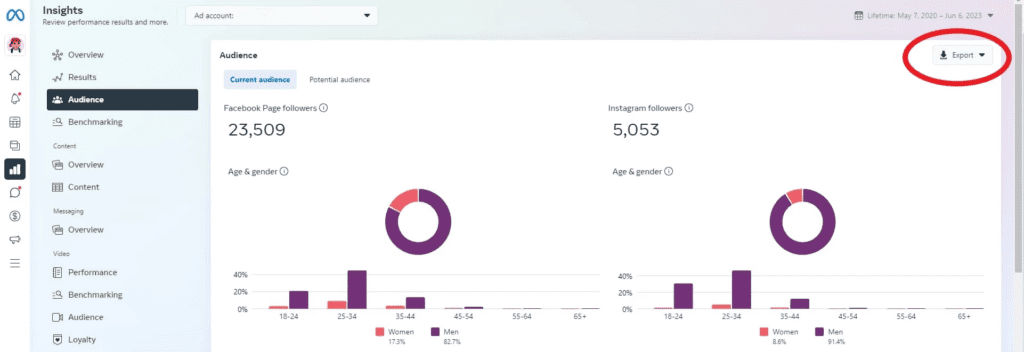
- Instagram Analytics: Utilize Instagram analytics tools to gain insights into the demographics and behaviours of your audience on this visual-centric platform.
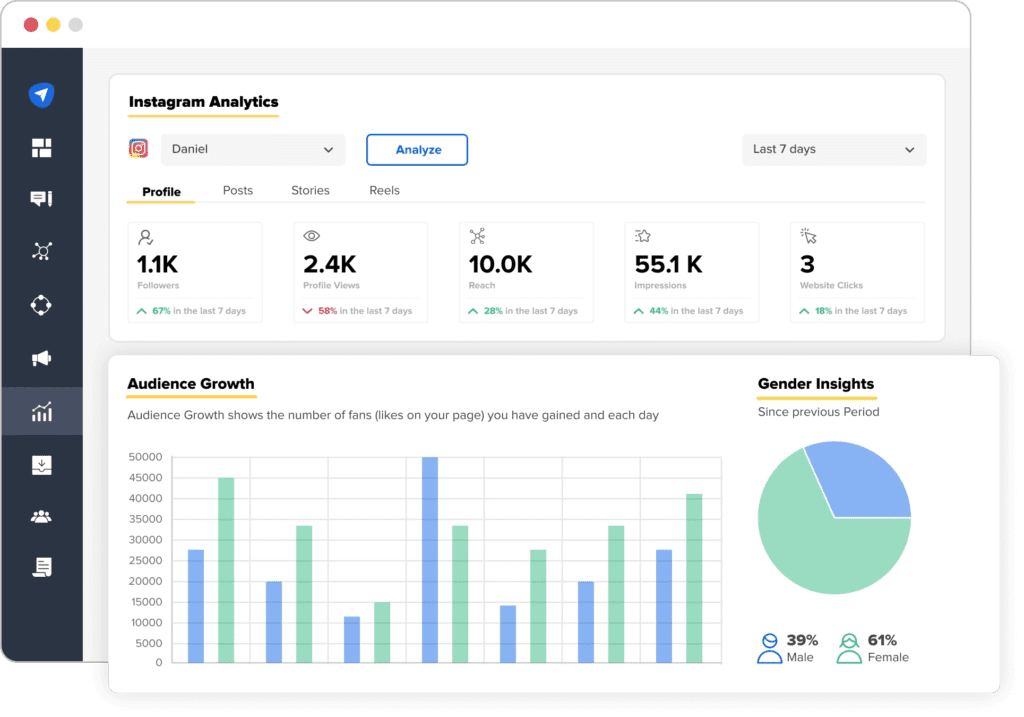
Customer Surveys and Feedback
- Online Surveys: Conduct surveys to collect data directly from your audience. In Malaysia, where online survey participation is common, businesses can gather valuable insights into preferences and expectations.
- Social Media Polls: Utilize polls on platforms like Instagram and X (formerly Twitter) to engage your audience and gather real-time feedback.
Customizing Content for Specific Audience Segments
Personalized Messaging
- Segmented Campaigns: Divide your audience into segments based on demographics and interests. A Malaysian e-commerce platform may run separate campaigns for urban professionals and students, tailoring messaging to their distinct needs.
- Localization: Consider Malaysia’s linguistic diversity. A food delivery service might create content in multiple languages to cater to various communities.
Visual Appeal
- Cultural Relevance: Ensure visuals resonate with the cultural context of Malaysia. An international fashion brand may adapt its visuals to align with local fashion trends.
- Inclusivity: Embrace diversity in visuals to appeal to Malaysia’s multicultural society. A skincare brand could showcase models representing different ethnicities.
4. Crafting Compelling Content for Malaysian Audience
Creating content that resonates with the Malaysian audience is a multifaceted task that involves understanding cultural nuances, incorporating local trends, and delivering a message that aligns with the diverse interests of the population.

Importance of Culturally Relevant Content
Cultural Sensitivity
- Understanding Local Traditions: Malaysian culture is rich and diverse, comprising Malay, Chinese, Indian, and indigenous influences. Craft content that respects and integrates these traditions to resonate with a broad audience.
- Festivals and Celebrations: Incorporate content around major festivals like Hari Raya, Chinese New Year, and Deepavali to engage with the festive spirit of Malaysians.
Language Nuances
- Multilingual Approach: Malaysia is a linguistically diverse country with Malay, English, Chinese, and Tamil being widely spoken. Tailor your content to the linguistic preferences of your audience, potentially using a mix of languages for broader reach.
- Local Slang: Infuse local slang or colloquial expressions to create a sense of familiarity and relatability.
Tips for Creating Visually Appealing Content
Vibrant Imagery
- Showcasing Diversity: Use visuals that celebrate Malaysia’s multicultural society. For instance, a fashion brand can feature models from various ethnic backgrounds wearing their latest collections.
- Scenic Landscapes: Highlight the country’s picturesque landscapes in visuals to evoke a sense of national pride and appreciation.
Video Content
- Storytelling through Videos: Malaysians are avid consumers of video content. Craft narrative-driven videos that tell compelling stories, whether it’s about your brand’s journey or customer testimonials.
- Short-Form Content: Leverage the popularity of short-form video content on platforms like TikTok and Instagram Reels for quick and engaging messages.
Incorporating Local Trends and Pop Culture
Social Media Challenges
- Participate in Trends: Engage with popular challenges and trends on platforms like TikTok and Instagram. This not only increases visibility but also positions your brand as culturally aware and current.
- User-Generated Content: Encourage your audience to create content related to your brand, tapping into the power of user-generated content.
Leveraging Local Influencers
- Collaborate with Influencers: Malaysian influencers hold significant sway over consumer opinions. Partnering with local influencers can amplify your reach and lend authenticity to your brand.
- Brand Integration: Ensure influencer collaborations seamlessly integrate your product or service into their content, making it more relatable to their followers.
5. Leveraging Paid Advertising Features
In the competitive landscape of digital marketing, leveraging paid advertising features is essential for businesses aiming to maximize their reach and impact on the Malaysian audience.
This section explores the diverse paid advertising options available on popular social media platforms and provides insights into effective budgeting and bidding strategies.
Exploring Advertising Options on Each Platform
Facebook Ads
- Dynamic Ads: Utilize dynamic ads to automatically show different products or content to users based on their interests, ensuring personalized and relevant promotions.
- Carousel Ads: Leverage carousel ads to display a series of images or videos, allowing businesses to showcase a variety of products or highlight different features.

Instagram Ads
- Story Ads: Engage users with immersive, full-screen ads in Instagram Stories. This format is ideal for capturing attention and driving user interactions.
- Shopping Ads: Take advantage of Instagram’s shopping feature to allow users to discover and purchase products directly from your ads.

X (formerly Twitter) Ads
- Promoted Tweets: Increase the visibility of your tweets by promoting them to a wider audience. Use engaging content to spark conversations and interactions.
- X (formerly Twitter) Trends: Participate in trending topics through Promoted Trends to boost brand visibility and engagement.
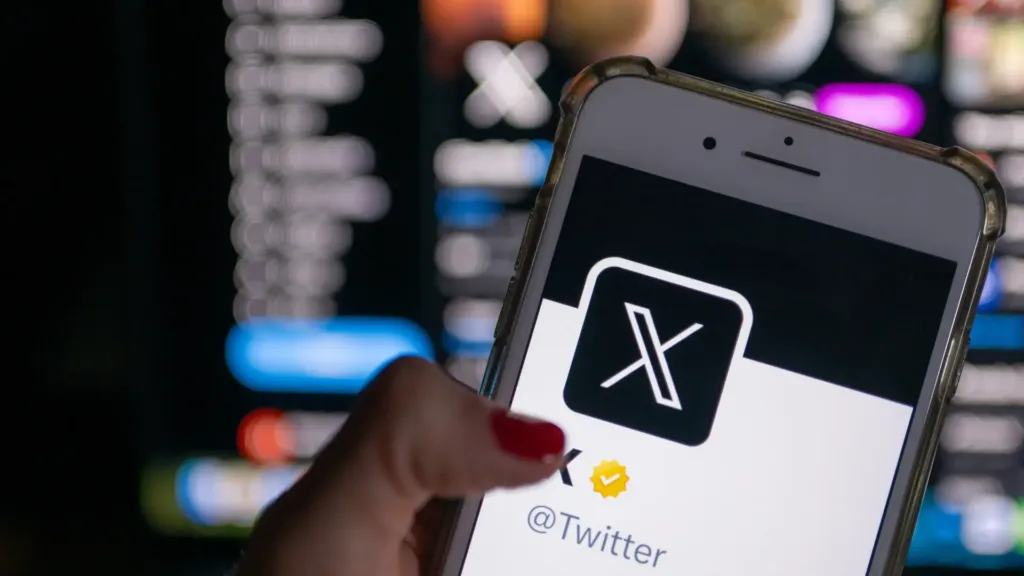
LinkedIn Ads
- Sponsored Content: Amplify your content’s reach by promoting it directly into the LinkedIn feeds of professionals. This is effective for B2B marketing and thought leadership campaigns.
- InMail Ads: Utilize Sponsored InMail to send personalized messages directly to users’ LinkedIn inboxes, driving engagement with targeted content.

Budgeting and Bidding Strategies for Effective Campaigns
Setting Realistic Budgets
- Cost-Per-Click (CPC): Allocate budgets based on your campaign goals and the average cost-per-click on the platform. In Malaysia, the average CPC across industries can vary, so staying informed is crucial.
- Lifetime Value (LTV): Consider the lifetime value of a customer when setting budgets, ensuring that acquisition costs align with the potential revenue generated.
Bidding Strategies
- Automated Bidding: Leverage automated bidding options provided by platforms to optimize for specific objectives such as clicks, impressions, or conversions.
- A/B Testing Bids: Conduct A/B testing on bid strategies to identify the most cost-effective approach for your specific audience and campaign goals.
6. Implementing Effective Social Media Campaigns
Executing an effective social media campaign in the diverse and dynamic market of Malaysia requires a strategic approach that encompasses thoughtful design, compelling content, and data-driven optimization.
This section delves into the key components of successful social media campaigns, providing insights into ad creatives, copywriting, A/B testing, and ongoing campaign monitoring.

Designing Engaging Ad Creatives
Visual Appeal
- High-Quality Imagery: Utilize visually striking images or graphics that align with your brand and resonate with Malaysian cultural preferences.
- Consistent Branding: Maintain a cohesive visual identity across all ad creatives to enhance brand recall.
Video Content
- Storytelling through Videos: Craft videos that tell compelling stories and evoke emotions. Malaysia is the leading video-consuming country in Southeast Asia, with an average of 7.2 hours a week spent watching online videos.
- Short-Form Content: Leverage the popularity of short-form video content on platforms like TikTok and Instagram Reels to capture short attention spans.
Writing Compelling Ad Copy
Localized Language
- Language Nuances: Tailor ad copy to align with local language nuances. Consider using colloquial expressions or idioms that resonate with the Malaysian audience.
- Cultural References: Integrate cultural references and context into your copy to establish a deeper connection with the audience.
Clear Value Proposition
- Conciseness: Keep ad copy concise while clearly communicating the value proposition. Malaysians often prefer straightforward and easily digestible information.
- Highlight Benefits: Focus on the benefits of your product or service rather than just features.
A/B Testing and Optimizing Campaigns
Testing Ad Variations
- Visual Elements: Conduct A/B testing on different visual elements such as images, colours, and layouts. Identify which visuals resonate better with your target audience.
- Copywriting Styles: Experiment with different copywriting styles to determine what tone and messaging style generate the most engagement.
Analyzing Audience Segmentation
- Demographic Insights: Leverage platform analytics to understand which demographics are responding best to your campaigns. Refine your targeting based on these insights.
- Geographic Targeting: Consider regional preferences and adapt campaigns to suit different areas within Malaysia.
Continuous Improvement Strategies
Feedback Integration
- User Feedback: Encourage and collect user feedback on social media. Analyze comments, messages, and reviews to understand user sentiment and areas for improvement.
- Adaptation to Trends: Stay updated on social media trends in Malaysia. Adapt your campaigns to align with emerging trends to maintain relevance and engagement.
Iterative Campaign Refinement
- Iterative Testing: Implement an iterative approach to campaign refinement. Continuously test and refine elements based on performance data, ensuring ongoing optimization.
- Seasonal Adaptations: Tailor campaigns to align with Malaysian cultural and seasonal events, capitalizing on opportunities for increased engagement.
7. Monitoring and Analyzing Campaign Performance
Effectively monitoring and analyzing campaign performance is the linchpin of successful social media advertising in Malaysia.
This section explores the key metrics, analytics tools, and data-driven strategies businesses can employ to evaluate the impact of their campaigns and refine strategies for optimal results.

Utilizing Analytics Tools for In-Depth Insights
Facebook Analytics
- Engagement Metrics: Monitor likes, shares, comments, and overall engagement on your Facebook ads. These metrics provide insights into audience interaction and content resonance.
- Conversion Tracking: Implement conversion tracking to measure the specific actions users take after clicking on your ads, such as making a purchase or signing up.
Google Analytics Integration
- Traffic Sources: Integrate social media data into Google Analytics to understand the contribution of social channels to website traffic. Analyze which social platforms are driving the most visits and conversions.
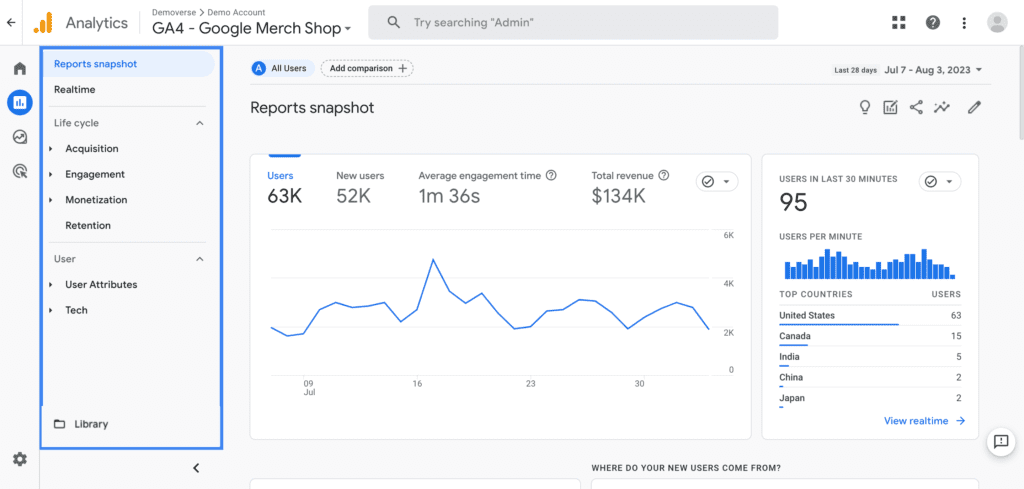
- User Behavior: Track user behaviour on your website, such as page views, time spent on the site, and bounce rates, to assess the effectiveness of your social media traffic.
Key Performance Indicators (KPIs) for Social Media Campaigns
Reach and Impressions
- Reach: Measure the number of unique users exposed to your campaign. Increasing reach indicates an expanding audience.
- Impressions: Track the total number of views your ads receive. A high number of impressions signifies increased visibility.
Click-Through Rate (CTR)
- CTR Formula: Calculate CTR by dividing the number of clicks by the number of impressions, then multiplying by 100. A higher CTR indicates a higher level of engagement.
- Benchmarking: Compare your CTR against industry benchmarks to assess the effectiveness of your campaign.
Conversion Rate
- Conversion Formula: Calculate conversion rates by dividing the number of conversions by the number of clicks, then multiplying by 100. A higher conversion rate signifies effective lead generation or sales.
- Attribution Models: Implement attribution models to understand the touchpoints in the customer journey contributing to conversions.
Continuous Monitoring and Real-Time Adjustments
Regularly Check Performance Metrics
- Daily Monitoring: Regularly check performance metrics to identify trends, anomalies, or sudden changes in campaign effectiveness.
- Real-Time Reporting: Utilize real-time reporting features provided by social media platforms for immediate insights.
A/B Testing and Iterative Adjustments
- Iterative Testing: Conduct A/B testing on ad variations to identify the most effective elements. Iteratively adjust campaigns based on testing results for continuous improvement.
- Budget Reallocation: Reallocate budgets based on the performance of individual campaigns or ad sets.
Attribution Modeling for Holistic Insights
First-Touch Attribution
- First-Touch Model: Attribute conversions to the first interaction a user had with your brand. Useful for understanding initial touchpoints in the customer journey.
- Example: If a user first discovered your brand through a Facebook ad, the conversion would be credited to Facebook in this model.
Last-Touch Attribution
- Last-Touch Model: Attribute conversions to the last interaction before a user takes a desired action. Useful for identifying the final touchpoints influencing conversions.
- Example: If a user clicked on an X (formerly Twitter) ad immediately before making a purchase, X (formerly Twitter) would receive credit for the conversion in this model.
Multi-Touch Attribution
- Multi-Touch Model: Consider all touchpoints throughout the customer journey. Provides a holistic view of the various interactions contributing to conversions.
- Example: If a user first interacts with your brand through a LinkedIn ad, later clicks on an Instagram ad, and finally converts after a Google search, each touchpoint is considered in the attribution.
8. Staying Compliant with Social Media Advertising Regulations
Navigating the social media advertising landscape in Malaysia demands a thorough understanding of the regulatory framework governing digital marketing.
This section explores the key aspects of staying compliant, delving into advertising standards, data protection, and legal considerations for marketers.

Adhering to Advertising Standards and Guidelines
Malaysian Communications and Multimedia Commission (MCMC) Guidelines
- Ad Content: Ensure your ad content complies with MCMC guidelines, avoiding misleading claims or content that could be deemed offensive.
- Clear Disclosures: Clearly disclose sponsored content and distinguish it from organic posts to maintain transparency.
Advertising Codes of Practice
- Malaysian Advertisers Association (MAA): Familiarize yourself with the MAA Code of Advertising Practice, which sets industry standards for ethical advertising.
- Industry-Specific Codes: Certain industries may have specific advertising codes. For example, pharmaceutical ads must adhere to the Malaysian Pharmaceutical Society’s guidelines.
Addressing Data Protection and Privacy Concerns
Personal Data Protection Act (PDPA) Compliance
- Consent Mechanisms: Ensure you have explicit consent mechanisms for collecting and processing user data. Obtain consent for marketing communications.
- Data Security Measures: Implement robust security measures to protect user data from unauthorized access or breaches.
Cookie Policy and Consent
- Cookie Consent: Display clear and comprehensive cookie policies. Obtain user consent before deploying cookies for tracking or analytics purposes.
- User Privacy Settings: Provide users with options to manage their privacy settings, allowing them to control cookie preferences.
Legal Considerations in Social Media Advertising
Intellectual Property Rights
- Trademark Usage: Respect intellectual property rights, especially trademarks. Obtain permission before using any trademarks in your advertising content.
- User-Generated Content: Ensure compliance with copyright laws, especially when featuring user-generated content in your campaigns.
Fair Competition and Consumer Rights
- Fair Competition Practices: Avoid engaging in unfair competition practices, such as false advertising or disparagement of competitors.
- Consumer Protection: Comply with consumer protection laws to safeguard the rights of consumers. Provide accurate information about products or services.
Transparency and Disclosure in Influencer Marketing
Influencer Advertising Guidelines
- Clear Disclosure: In influencer marketing, ensure influencers clearly disclose sponsored content. This disclosure should be prominent and easily noticeable.
- Educating Influencers: Educate influencers about advertising regulations to ensure they understand and comply with disclosure requirements.
FTC Guidelines Compliance
- Align with International Standards: If engaging in cross-border influencer marketing, align with international guidelines such as the U.S. Federal Trade Commission’s (FTC) guidelines on endorsements and testimonials.
- Transparency in Partnerships: Disclose any financial or business relationships between influencers and brands to maintain transparency.
Conclusion
In the ever-evolving landscape of digital marketing, mastering social media advertising is not just a necessity but a strategic imperative for businesses aiming to thrive in Malaysia’s diverse and dynamic market.
This comprehensive guide has illuminated the intricacies and nuances of creating impactful social media campaigns tailored to the unique preferences and cultural tapestry of Malaysian consumers.
As we conclude this journey through the Malaysia Social Media Advertising Guide, let’s recap the key takeaways and insights that can propel your business toward unprecedented growth.
Understanding the Malaysian Social Media Landscape
Our exploration began with a deep dive into the Malaysian social media landscape. Malaysia presents a vast digital playground for businesses.
Understanding the dominance of platforms like Facebook, Instagram, X (formerly Twitter), and LinkedIn, and recognizing the cultural diversity in content consumption laid the foundation for crafting tailored strategies.
Setting Goals for Social Media Advertising
Setting clear and measurable goals emerged as the cornerstone of success. Whether aiming for brand awareness, lead generation, or direct sales, aligning objectives with the right platforms, content strategies, and measurable KPIs proved pivotal.
Leveraging data from platforms like Facebook Insights and Instagram Analytics empowered businesses to make informed decisions and optimize their campaigns effectively.
Creating a Target Audience Profile
The guide then delved into the art of creating a target audience profile. In a melting pot of cultures like Malaysia, businesses learned the significance of demographic and psychographic considerations.
Crafting Compelling Content for Malaysian Audience
Armed with insights into the target audience, the guide transitioned to the creation of compelling content.
From culturally sensitive visuals and videos to tapping into local trends and leveraging influencer collaborations, the emphasis was on creating content that not only engages but also authentically connects with the Malaysian audience.
Leveraging Paid Advertising Features
The guide then explored the world of paid advertising, unravelling the potential of platforms like Facebook, Instagram, X (formerly Twitter), and LinkedIn.
Businesses gained insights into strategic budgeting, effective bidding strategies, and the importance of A/B testing for optimizing campaigns.
Implementing Effective Social Media Campaigns
Implementing effective social media campaigns emerged as a comprehensive process that involves continuous monitoring, data-driven decision-making, and iterative adjustments.
Businesses learned the importance of KPIs, real-time adjustments, and sophisticated attribution models, illustrated through the case study of Spotify’s data-driven personalization.
Monitoring and Analyzing Campaign Performance
The penultimate section provided a thorough exploration of monitoring and analyzing campaign performance.
From utilizing analytics tools like Facebook Analytics and Google Analytics to defining key performance indicators, businesses gained insights into assessing campaign success and making informed decisions for future strategies.
Staying Compliant with Social Media Advertising Regulations
The final chapter shed light on the legal and ethical dimensions of social media advertising in Malaysia.
From adhering to advertising standards and data protection regulations to maintaining transparency in influencer marketing, businesses were equipped with the knowledge to navigate the regulatory landscape with integrity.
If you are looking for a top-class digital marketer, then book a free consultation slot here.
If you find this article useful, why not share it with your friends and business partners, and also leave a nice comment below?
We, at the AppLabx Research Team, strive to bring the latest and most meaningful data, guides, and statistics to your doorstep.
To get access to top-quality guides, click over to the AppLabx Blog.
People also ask
What social media platform is mostly used in Malaysia?
Facebook is the predominant social media platform in Malaysia. Its widespread adoption and diverse user base make it the go-to platform for businesses to connect with the Malaysian audience, followed closely by Instagram, X (formerly Twitter), and LinkedIn.
How popular is social media in Malaysia?
Social media is immensely popular in Malaysia, with an 80% internet penetration rate. Over 26 million Malaysians engage actively on platforms like Facebook, Instagram, X (formerly Twitter), and LinkedIn. The pervasive use underscores social media’s integral role in communication, making it a vital channel for businesses.
What is the trend in digital marketing in Malaysia?
In Malaysia, the digital marketing trend is shifting towards video content, influencer collaborations, and personalized experiences. With a mobile-centric population, businesses are leveraging platforms like TikTok and Instagram Reels, emphasizing visual storytelling to capture the attention of the tech-savvy Malaysian audience.


















